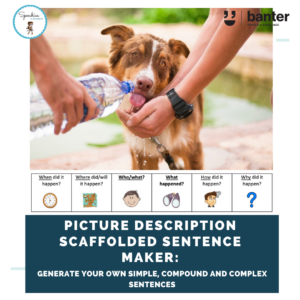(L236) Picture Description Scaffolded Sentence Maker: generate your own simple, compound and complex sentences
$5.99 including GST
For beginners, our simple, compound sentence and complex sentence sentence builders are a great way to start, with highly structured practice and lots of repetitions. But, to truly learn how to use sentence forms and to transfer those skills to conversation, story telling and other kinds of discourse, you need to generate your own sentences.
This picture description resource is designed to help by providing a bridge between highly structured sentence-level exercises (like sentence builders) and discourse level text types (like narratives). Featuring 20 high quality, interesting photos, this resource includes scaffolds for sentence generation.
Description
Many children and others who are learning English as a second language and/or who have developmental language or learning delays have difficulties understanding and using correct word order in sentences.
For beginners, our simple, compound sentence and complex sentence sentence builders are a great way to start, with highly structured practice and lots of repetitions. But, to truly learn how to use sentence forms and to transfer those skills to conversation, story telling and other kinds of discourse, you need to generate your own sentences.
This picture description resource is designed to help by providing a bridge between highly structured sentence-level exercises (like sentence builders) and discourse level text types (like narratives). Featuring 20 high quality, interesting photos, this resource includes scaffolds for sentence generation, with prompts for different parts of speech, and different types of clauses, that allow you to target your syntax goal (or goals), while using evidence-based language therapy techniques like recasting, building up and breaking down, extensions and expansions, focused stimulation and modelling.
Here’s how it works.

From the picture, we can use the scaffold prompts to generate a range of different sentence forms, including:
- Subject Verb (SV): The dog is drinking.
- Subject Verb Object (SVO): The dog is drinking water.
- Subject Verb Adverbial (SVA) phrase: The dog is drinking at the park.
- Subject Verb Complement (SVC): The dog is thirsty.
- Subject Verb Object Adverbial (SVOA) phrase: The dog is drinking water at the park.
- Compound sentences: The dog is thirsty but he is not hungry.
- Complex sentences, elaborated noun and verb phrases, and relative clauses:
-
- The brown and white dog is drinking water because he is thirsty.
- One afternoon, in the park, the dog drank water from a water bottle held to his mouth by his owner because it was hot and he was thirsty.
- The brown and white dog with the pink nose and tongue lapped greedily at the water that was provided by his kind owner from a plastic water bottle while another friend cupped her hands under his mouth to collect the water because he was overheating and dehydrated.
This resource is designed to support the development of both oral language and written expression. It can also be used to generalise or transfer speech fluency (stuttering) and speech sound and articulation gains at the sentence level.
For more advanced students, the pictures can also be used to practice making inferences, predictions, for verbal reasoning tasks (e.g. cause/effect, sequencing, and problem solving), and prompts for story-writing.
Once mastered, students can progress smoothly to discourse level tasks, including narratives and explanations.
In our speech pathology clinic, we have found this resource useful. We hope you do too!

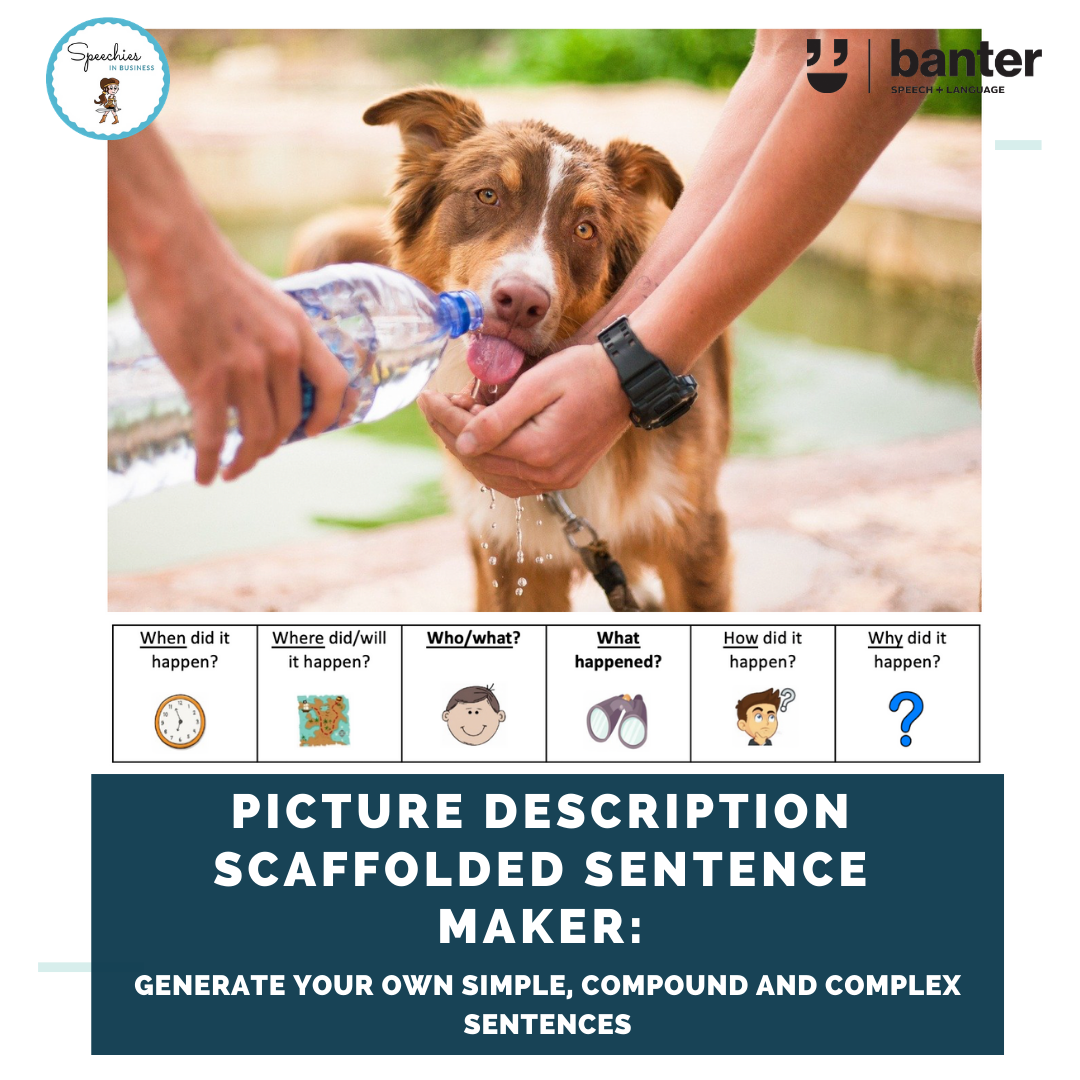




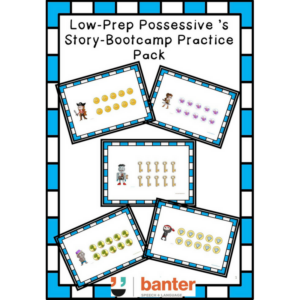
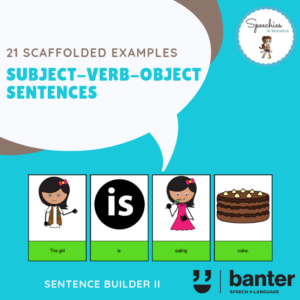
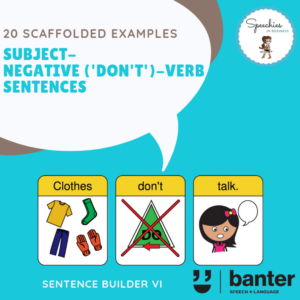
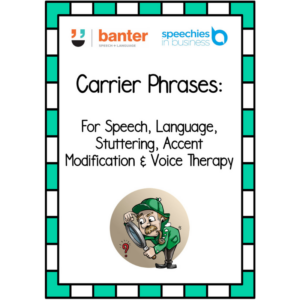
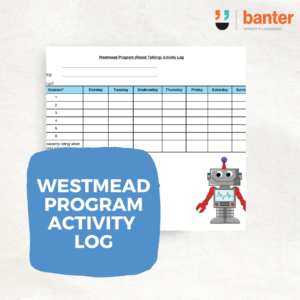 (S112) Westmead Program for Stuttering: Robot Talking Activity Log
(S112) Westmead Program for Stuttering: Robot Talking Activity Log 